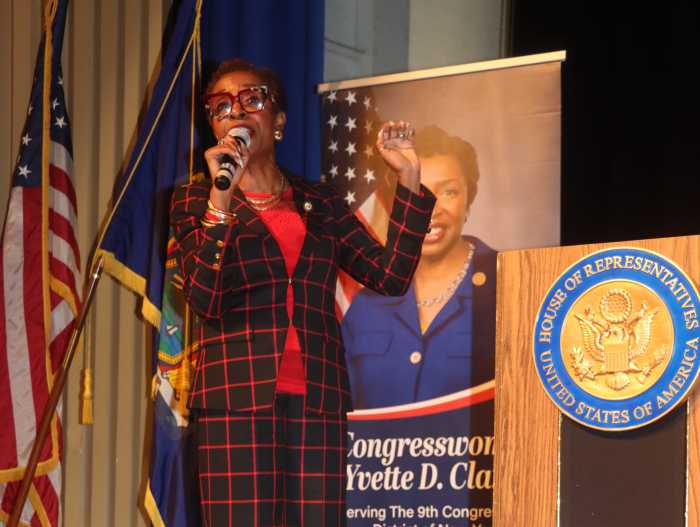Talk about hiding the ball! On June 6, a unanimous four-judge panel of the New York Appellate Division’s Second Department, based in Brooklyn, confirmed a State Division of Human Rights (SDHR) order that had adopted a decision by an administrative law judge ruling that a Port Jervis employer violated the law when it discharged a transgender employee.
But nobody reading the court’s short memorandum opinion — or the short agency opinion and order — would have any idea the case involved a gender identity discrimination claim. Surprisingly — given the novelty of the legal issues involved — only the administrative law judge’s opinion, an internal agency document, communicates what the case is actually about.
Erin Fuller, a transgender woman, was fired by Mark Rea, the owner of Advanced Recovery, on August 10, 2010, the day she presented her supervisor with a copy of a court order authorizing her change of name to Erin. Rea called Fuller into his office and, according to her, said in the supervisor’s presence, “Now I have a problem with your condition. I have to let you go.”
Obscure NYS appellate ruling buries the important precedent it sets
Rea and other company officials were aware Fuller was transitioning, since the year before she presented them with a doctor’s letter explaining her gender dysphoria diagnosis and the steps she would be taking to transition. On at least one occasion Rea reacted adversely to Fuller’s mode of dress, but it wasn’t until he was presented with the legal name change that he apparently decided that he no longer wanted to retain Fuller, a good worker with the company for more than two years.
When Fuller went back later to pick up her final paycheck, a supervisor told her that “he felt bad, but your job would be waiting for you as long as you came in wearing normal clothes.”
Attempting to escape possible liability, Rea and the company’s lawyer later came up with a termination letter that cited other reasons for firing Fuller and said nothing about her name change, mode of dress, or gender identity, but they never sent her that letter. It first surfaced as evidence at the SDHR law judge’s hearing on Fuller’s discrimination claim.
The discharge came five years before Governor Andrew Cuomo directed the SDHR to adopt a policy under which gender identity discrimination claims would be deemed covered by the state’s ban on sex discrimination.
Fuller filed her complaint with SDHR in 2010, checking the boxes for “sex” and “disability” as the unlawful grounds for her termination.
After the company received the complaint, it apparently prompted local police to arrest Fuller for altering a medical prescription, a spurious charge based on her changing the pronouns on the note written by a doctor on a prescription form after she missed a few days of work due to hospital treatment. She didn’t immediately think to amend her discrimination claim to allege retaliation, unfortunately waiting until her hearing to raise the issue. The administrative law judge, Robert M. Vespoli, found she had waited too long to assert that claim.
Attorneys Stephen Bergstein and Helen Ullrich of New Paltz, who represented Fuller throughout her case, persuaded Vespoli that she had a valid claim and that the reasons given by the employer for firing her were pretexts for discrimination.
Relying on a scattering of trial court decisions holding that transgender people are protected from discrimination under state law, Vespoli concluded Fuller “states a claim pursuant to New York State’s Human Rights Law on the ground that the word ‘sex’ in the statute covers transsexuals.”
Vespoli also found that Fuller’s gender dysphoria is a “disability,” for which she also enjoys nondiscrimination protection. New York State does not have the explicit exclusion of coverage for people with “gender identity disorders” that is in the federal Americans with Disabilities Act.
In his opinion dated February 20, 2015, Vespoli rejected the employer’s evidence of other reasons for the discharge, finding that the proffered letter was created after the discharge for the purpose of litigation, that it had never been delivered to Fuller, and that the reasons it offered were pretexts for discrimination. He recommended awarding Fuller $14,560 in back pay and $30,000 for mental anguish caused by the discrimination. He also recommended imposing a civil penalty on the company of $20,000.
Advanced Recovery’s appeal to the court did not explicitly contest the ruling that the state Human Rights Law covers the case, instead urging it to find that the ruling was not supported by substantial evidence of discrimination. Perhaps because the company did not raise the question whether the Human Rights Law bans discrimination because of gender identity, the Appellate Division’s ruling also did not mention that Fuller is a transgender woman and did not discuss the question whether the ban on discrimination based on disability applies here.
Instead the court’s opinion stated merely that Fuller alleged “that the petitioners discriminated against her on the basis of sex and disability,” and the agency had ruled in her favor. The court referred to the “substantial evidence in the record,” so it presumably examined that record and the panel surely knew that gender identity discrimination was an important issue in the case.
Cursory research in published New York court opinions would show that there is no prior appellate ruling finding that a gender identity claim can be asserted under the Human Rights Law’s prohibited grounds of “sex” and “disability.” The court took its time on this case, waiting until June of this year to issue a ruling upholding an administrative decision that was issued in April 2015. Despite taking all that time, it produced an opinion that never mentions these details and does not expressly state agreement with the trial court rulings Vespoli specifically cited in support of his conclusions.
The court’s failure to mention the doctrinal significance of its ruling may be explainable because the employer did not raise the issue on its appeal, but its omission renders the decision basically useless as an appellate precedent. The panel arguably failed to play its proper role in a system of judicial precedent to produce a decision that can be referred to by later courts.
The judges whose names appear on this uninformative opinion are Justices Mark C. Dillon, Ruth C. Balkin, Robert G. Miller, and Hector D. LaSalle.
Cuomo’s 2015 directive on gender identity nondiscrimination, issued while this case was pending before the Appellate Division, reinforced existing practice at the State Division of Human Rights, as the earlier opinions cited in Vespoli’s opinion show, but in the absence of an explicit appellate ruling, enacting the long-stalled Gender Identity Non-Discrimination Act (GENDA) remains a critical need. Its recent defeat in a Senate committee after renewed passage by the Assembly is more than merely a symbolic setback for the community.
SDHR, which sought enforcement of its decision, was represented before the Appellate Division by Caroline J. Downey, Toni Ann Hollifield, and Michael K. Swirsky. Port Jervis lawyer James J. Herkenham represented the company.



































